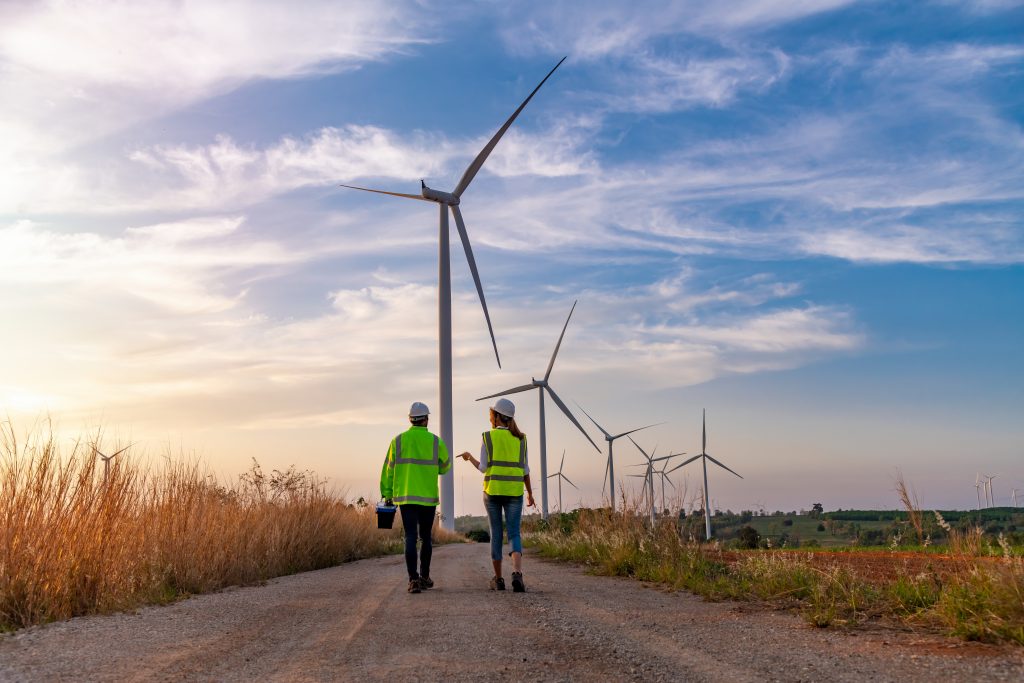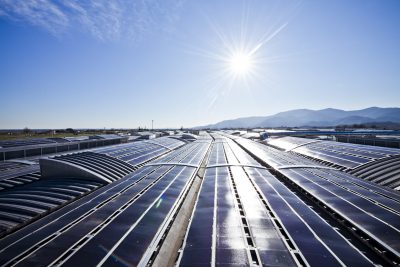The United States’ Inflation Reduction Act includes a historic attempt to address the climate crisis by investing in green technology and pledging to cut emissions by a third. Future investigates the investment opportunities
In August 2022, President Biden signed into US law the Inflation Reduction Act, hailing it as the most significant action Congress had ever taken on clean energy and climate change. As well as provisions to reduce drug prices, it includes measures aimed at reducing the deficit by boosting the Internal Revenue Service (IRS) revenue and raising taxes on large corporations. But the main target in its sights is climate change. Its billions of dollars of funding for green energy projects are expected to lower energy costs over time, while incentives will make access to clean technologies more affordable.
Global media collaborative Covering Climate Now held a webinar in March 2023 exploring the Act’s impact over the months since it passed into law. Host Mark Hertsgaard of Covering Climate Now explained how the Act took a “carrot, not stick” approach to encouraging investment. “The law authorizes an estimated $369 billion worth of incentives,” he said, “which its backers project could reduce US greenhouse gas emissions by roughly one third over the coming decade.”
These incentives range from tax breaks for individuals buying electric cars, to grants and loans for organizations engaged in projects that will help the green energy transition, whether a company manufacturing solar panels or a community group looking to replace a school bus with an electric vehicle.
“The law authorizes an estimated $369 billion worth of incentives, which its backers project could reduce US greenhouse gas emissions by roughly one third over the coming decade”
Mark Hertsgaard, Covering Climate Now
Upgrading, repurposing, or replacing infrastructure
Jigar Shah is director of the US Department of Energy’s Loan Programs Office, which has $250bn of funding to allocate towards upgrading, repurposing, or replacing energy infrastructure. “Right now, we’re processing 135 active applications, seeking about $124 billion in loans,” he said. “And because it’s roughly 50/50 equity debt, that’s $250 billion of projects that have submitted paperwork.” Many of these projects may have been a long time in the planning, but the Inflation Reduction Act provided a final push to make them viable. Long term, it could bring down the cost of nascent technologies, “[crossing] the bridge to bankability, to a really market-affirming place where you can start to save gigatons of carbon around the world.”
Over the course of 10 years, the Act is looking at attracting a staggering $23 trillion of private sector investment. “It’s a big amount of money, but it’s actually what we already spend,” Shah said, on “[replacing] stuff that breaks.” People will simply be replacing old tech with something less harmful to the planet.
In creating these new technologies, of course, companies will also be creating jobs. “Since the Act passed in August, we have seen almost 110,000 clean energy jobs created,” said Lori Lodes, executive director and co-founder of non-profit Climate Power. “That’s 126 clean energy projects in 34 states,” she said, listing 49 new battery manufacturing sites, 22 plans to expand wind and solar manufacturing, and locations in states from Michigan to Texas. “These jobs are happening everywhere. It’s really a nationwide clean energy plan that’s creating new industries and ‘made in America’ supply chains in these critical areas.”
“Since the Act passed in August, we have seen almost 110,000 clean energy jobs created. That’s 126 clean energy projects in 34 states”
Lori Lodes, executive director and co-founder of non-profit Climate Power
In line with the president’s Justice40 Initiative, a key part of the Act is that 40% of the benefits of these investments go to communities that have been marginalized, overburdened by pollution, and underserved by infrastructure and other basic services – referred to as environmental justice communities. Peggy Shepard is co-founder and executive director of WE ACT for Environmental Justice, an organization that works to ensure the participation of such communities in environmental policy. Recently it launched Justice40rward to improve collaboration between officials, municipalities, and those who live in the communities Justice40 was designed to support.
“What we’re finding is that most organizations and municipalities were not ready for this incredible opportunity,” she said. “These are very small organizations. Many of them do not have a grant writer, have never applied for a federal grant, never applied for a state grant. And so suddenly they have the opportunity to apply for this money but may not have the infrastructure.”
Increasing competitiveness
WE ACT is working to counter this by forging links between community groups and officials, spreading awareness of the Act, and encouraging the support of philanthropists. Outside the US, critics of the Act have labelled it “protectionist”. For example, its tax incentives of up to $7,500 for individuals buying an electric car require the battery to have been manufactured or assembled in North America, and critical minerals within it recycled in North America or extracted or processed in a country that has a free trade agreement with the US. Already this has led to automaker VW pausing plans for a new battery plant in Germany, while Tesla has said it will focus battery production in the US rather than boosting production at its German ‘gigafactory’. The EU’s response has, in part, been the launch of its Critical Raw Materials Act, which sets targets for recycling, refining and extracting raw materials. As well as helping to increase competitiveness, the regulation is expected to help secure supply chains and reduce reliance on China.
Geopolitical tensions notwithstanding, many across the globe who care about the climate crisis may well welcome the sight of countries vying to outbid each other for climate-friendly technologies. And if the Inflation Reduction Act does allow the US – historically the world’s largest polluter – to cut emissions by a third, then it would be a good thing for the world, not just Americans. Organizations like Climate Power and WE ACT will be watching every step of the way.
Further details:
Organized by journalists for journalists, Covering Climate Now is the world’s largest media collaborative: https://coveringclimatenow.org/






